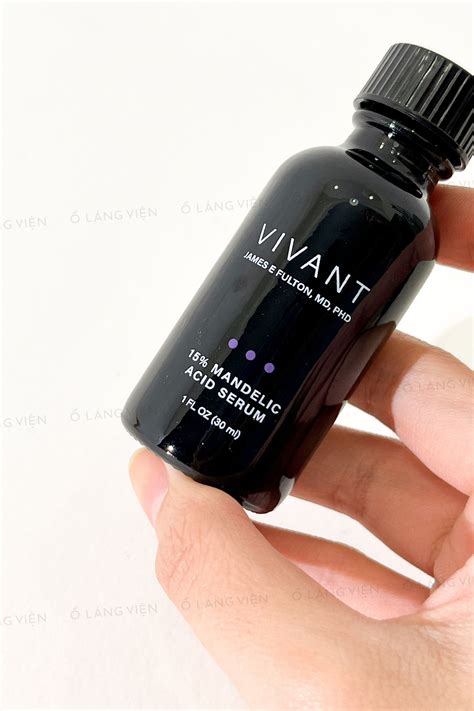Mandelic Acid: A Comprehensive Guide to Its Benefits, Applications, and More
Introduction
Mandelic acid is an alpha hydroxy acid (AHA) naturally derived from bitter almonds. It is a popular ingredient in skincare products due to its gentle exfoliating properties and ability to improve skin texture and appearance. In this comprehensive guide, we will explore the various benefits, applications, and considerations related to mandelic acid.
Understanding Mandelic Acid
1. What is Mandelic Acid?**

Mandelic acid is a water-soluble AHA with a larger molecular size compared to other AHAs like glycolic acid. This larger size allows it to penetrate the skin more slowly, making it suitable for sensitive or acne-prone skin.
2. Mechanism of Action**

Mandelic acid works by gently exfoliating the skin, removing dead skin cells and promoting cell turnover. This process enhances skin texture, reduces fine lines and wrinkles, and improves overall skin clarity. Additionally, mandelic acid has antibacterial and anti-inflammatory properties, making it beneficial for treating acne.

Benefits of Mandelic Acid
1. Exfoliation**
Mandelic acid exfoliates the skin, removing dead skin cells and promoting cell renewal. This can help improve skin texture and reduce dullness.
2. Anti-aging**
Mandelic acid stimulates collagen production, a protein responsible for skin firmness and elasticity. This helps reduce fine lines and wrinkles, giving skin a more youthful appearance.
3. Acne Treatment**

Mandelic acid possesses antibacterial and anti-inflammatory properties that can help reduce acne. It exfoliates clogged pores, reducing breakouts and inflammation.
4. Hyperpigmentation Reduction**
Mandelic acid inhibits melanin production, a pigment that causes dark spots and hyperpigmentation. This can help fade existing dark spots and prevent the formation of new ones.
Applications of Mandelic Acid
1. Skincare**
Mandelic acid is commonly found in skincare products such as cleansers, serums, and masks. It is suitable for all skin types, including sensitive skin.
2. Professional Treatments**
Mandelic acid is used in professional skincare treatments such as chemical peels. These treatments involve applying a higher concentration of mandelic acid to the skin to achieve deeper exfoliation.
3. Other Applications**
Mandelic acid is also used in some hair care and cosmetic products for its exfoliating and anti-inflammatory properties.
Considerations for Using Mandelic Acid
1. Side Effects**
Mandelic acid is generally well-tolerated, but some people may experience mild side effects such as redness, irritation, or dryness. These side effects are usually temporary and subside with continued use.
2. Sun Sensitivity**
Mandelic acid can make the skin more sensitive to sunlight. It is important to use sunscreen daily when using mandelic acid products.
3. Patch Test**
It is recommended to perform a patch test on a small area of skin before using mandelic acid products, especially if you have sensitive skin.
Tips and Tricks for Incorporating Mandelic Acid into Your Skincare Routine
1. Start Gradually**
Begin using mandelic acid products gradually, such as once or twice a week. This allows your skin to adjust and reduce the risk of irritation.
2. Choose the Right Concentration**
Select mandelic acid products with an appropriate concentration for your skin type. For sensitive skin, start with lower concentrations (5-10%) and gradually increase as tolerated.
3. Use a pH-Balanced Product**
The pH level of mandelic acid products affects their efficacy and potential for irritation. Look for products with a pH between 3 and 4.
4. Moisturize Regularly**
Mandelic acid can be drying, so it is important to moisturize your skin regularly after using mandelic acid products.
Benefits vs. Drawbacks of Mandelic Acid
Benefits:
- Gentle exfoliation
- Anti-aging properties
- Acne treatment
- Hyperpigmentation reduction
- Suitable for most skin types
Drawbacks:
- Can cause mild side effects (redness, irritation, dryness)
- May make skin more sensitive to sunlight
- May not be as effective as stronger AHAs for some skin concerns
FAQs
1. Is mandelic acid safe for sensitive skin?**
Yes, mandelic acid is generally considered suitable for sensitive skin due to its gentle exfoliation and anti-inflammatory properties. However, it is always recommended to start with a patch test.
2. How often can I use mandelic acid?**
The frequency of use depends on your skin type and the concentration of the product. Start with once or twice a week and adjust as needed.
3. Can I use mandelic acid with other skincare products?**
Yes, but it is important to avoid using it with other exfoliating or potentially irritating products.
4. Does mandelic acid cause purging?**
Mandelic acid can sometimes cause purging, which is a temporary increase in breakouts. This is a normal part of the skin's adjustment process and should subside with continued use.
5. Is mandelic acid more effective than glycolic acid?**
Mandelic acid is generally considered gentler than glycolic acid, but both are effective AHAs. The choice between the two depends on individual skin tolerance and desired results.
6. Can I use mandelic acid during pregnancy or breastfeeding?**
It is best to consult with your healthcare provider before using mandelic acid during pregnancy or breastfeeding.
Call to Action
If you have been considering incorporating mandelic acid into your skincare routine, we encourage you to do your research and consider the information presented in this guide. Remember to start gradually, choose the right concentration, and moisturize regularly to minimize the risk of side effects. With proper use, mandelic acid can be a beneficial addition to your skincare regimen.

